Playing the song Bani Le
Bani Le (or just Bani) is a very good piece for beginners on the kora to tackle. It is a song which talks about the 19th century war between the Muslim Fula kingdom and the non-Muslim Kabu kingdom. It is in praise of the defeated king of Kabu, Janke Wali. The story is that the the king of Kabu (or Gabou) sent messengers to a Muslim village to buy horses. They were asked to say prayers in the Muslim way, but refused and all but one were killed, the man spared being sent back to his king to tell what had happened. The word “Bani” means refusal. In Mali, this song has been also used to praise Sanunge Guimba Keita who resisted French colonial troops. In Casamance, a variant of Bani called Sanu or Sanou (which means gold) is a very popular praise song.
Rather than trying to learn the song by learning a complex accompaniament piece by piece, or learning the two hands separately and then trying to bring them together, what we will do here is to start with the “skeleton” of the kumbengo (the repeated accompaniament.) This simple and a stripped down form can be learnt very quickly. However, we can then add modifications and extra notes and build up to something more complex. We’ll see how the kora player can vary the kumbengo between repetitions.
On this page, the music is shown in three different forms - staff notation (written one octave higher than played, to avoid lots of ledger lines), a kora bridge diagram and tablature. You can choose which one you use and open the image in a new tab, or even print it out if it helps.
There’s also a (synthesised) mp3 of each variant - apologies for the poor quality of these, but they simply illustrate the basic tune.
1 At its most basic, Bani can be broken down into a sequence of 8 evenly spaced notes. The very simplest way to play it is to simply use 4 strings on the right hand side. Play the first right hand string, then the second, then the seventh, then the second. That is the first bar. For the second bar, it is very similar. Play the first right hand string, then the second, then the fifth string, then the second. Try to keep a steady rhythm so that each note is of the same length.

Bani Le - Staff Notation v1
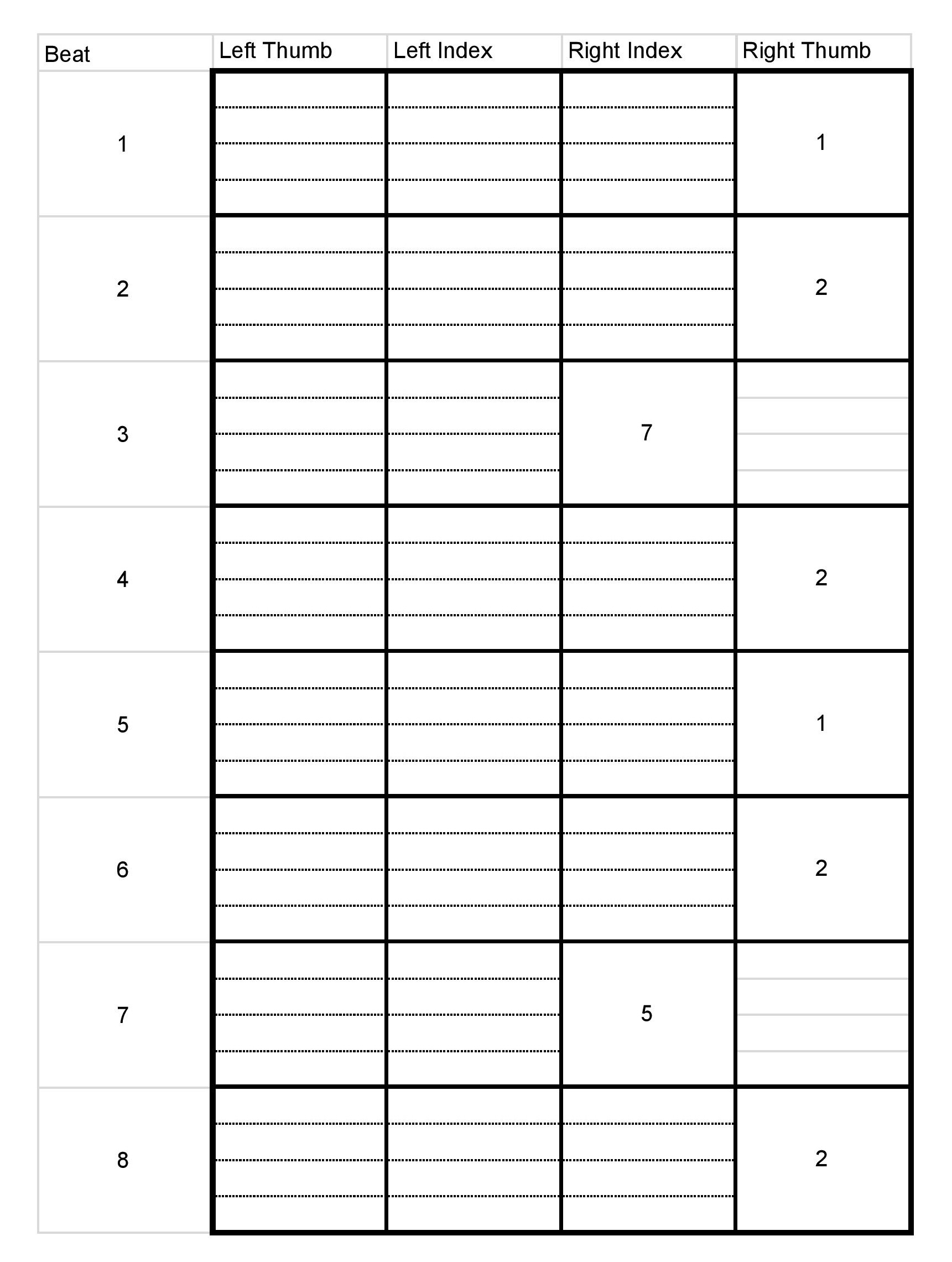
Bani Le - Tab v1

Bani Le - Bridge Notation v1
Take some time to get that sequence absolutely solid and repeatable and sounding musical. For each of the variants which follow, do the same. Make sure that you can repeat many times without error. Don’t be afraid to start off at a slow pace and gradually increase as your muscle memory builds.
2 Now, let’s introduce some variation.
First of all, we can try doubling the D note (the seventh string.) By doubling I simply mean playing the note twice quickly in succession in the same time that we previously played it once. We can do the same with the G note (fifth string), or both. That gives us 4 possible variations of the same kumbengo. Play about with that, trying to keep in time and to switch back and forth between the different variations.

Bani Le - Staff Notation v2
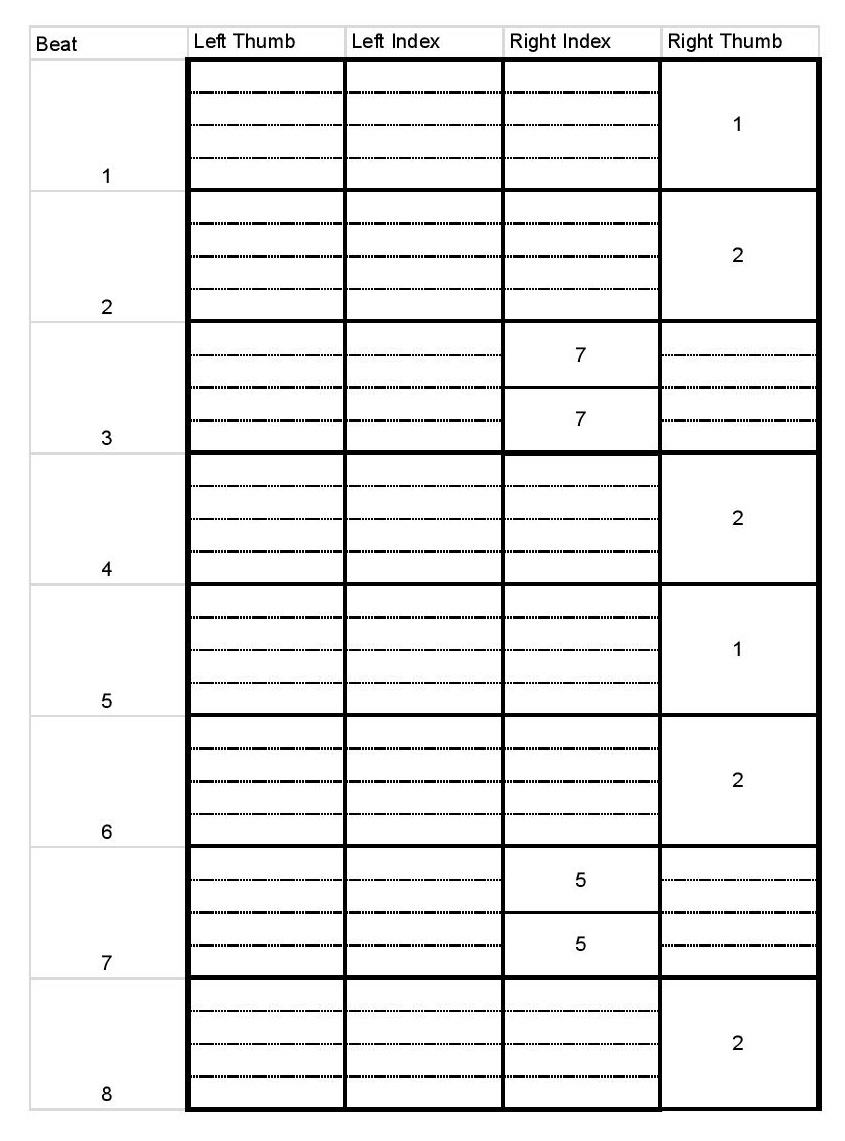
Bani Le - Tab v2

Bani Le - Bridge Notation v2
3 Now, we can also try playing the D and G notes using other strings.
We have been playing the D note as the 7th string on the right hand side, but D can also be played as the 3rd string on the left, or as the 7th string on the left. Try running through the pattern using first one and then the other.

Bani Le - Staff Notation v3
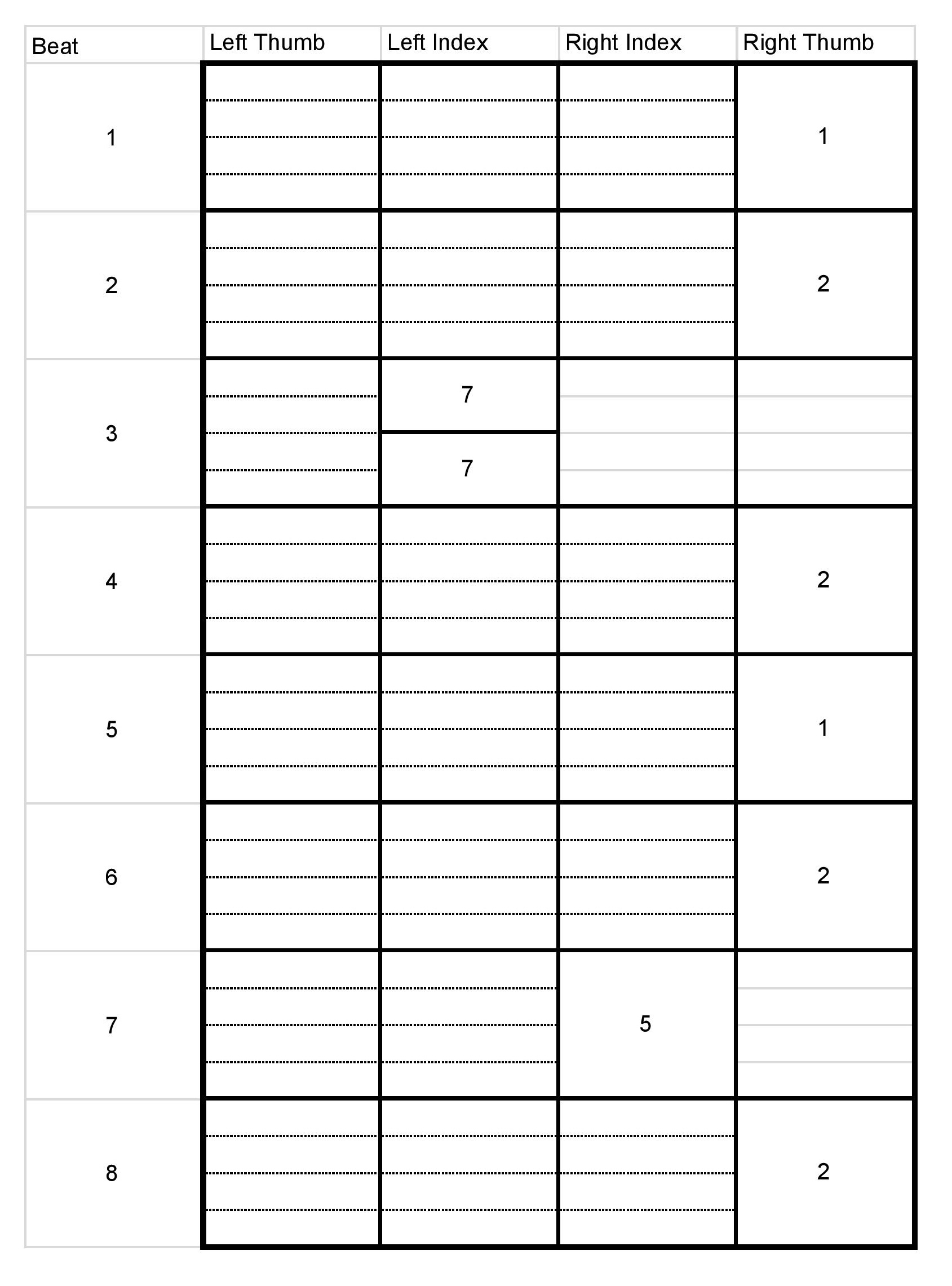
Bani Le - Tab v3

Bani Le - Bridge Notation v3
4 Similarly, we’ve played the G note as the 5th string on the left hand side, but it can also be played as the 5th note on the left, (or indeed as the 9th string on the right.) Try different variations of playing the G on the left, on the right, both at the same time, or one then the other.

Bani Le - Staff Notation v4
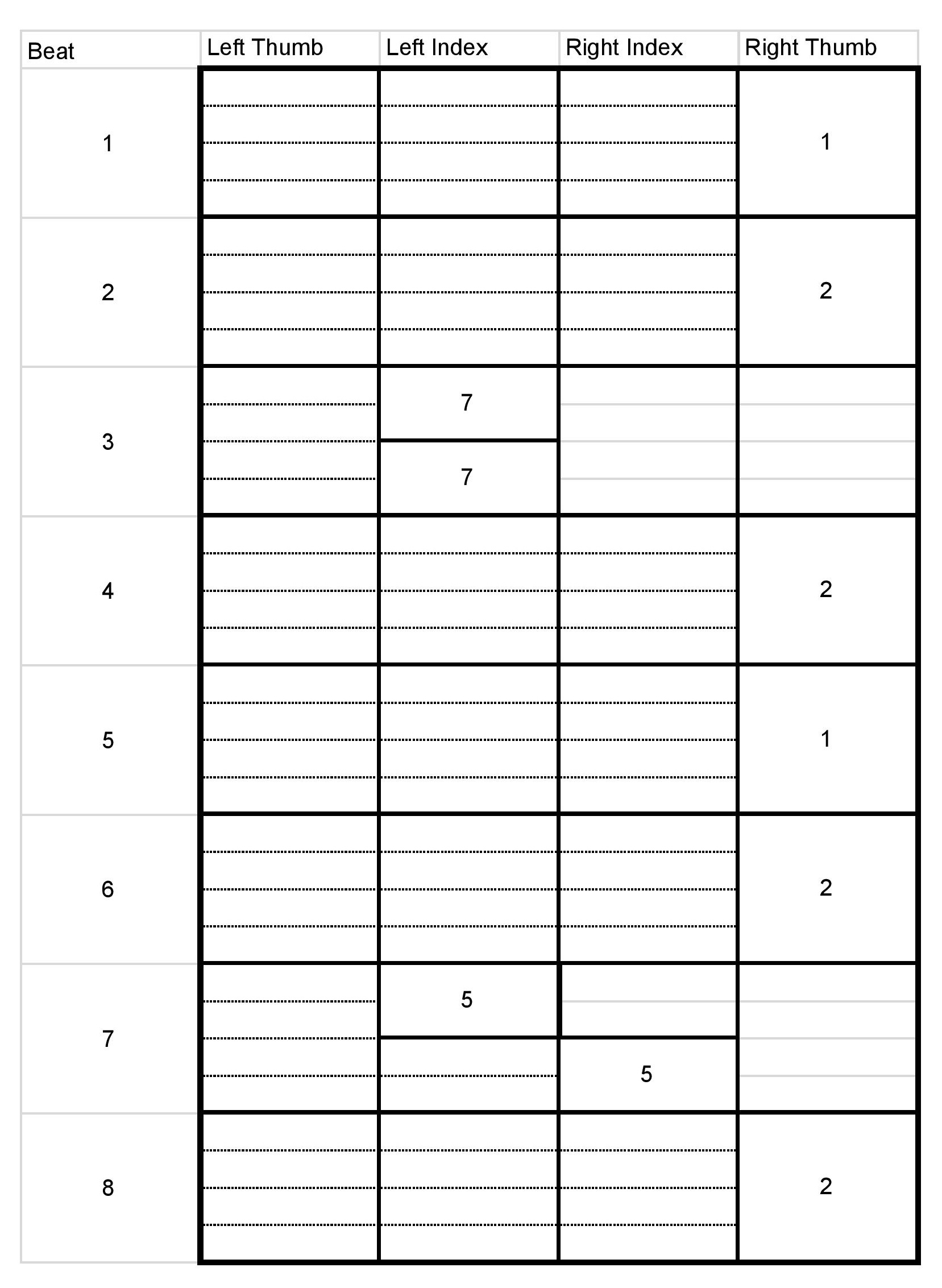
Bani Le - Tab v4

Bani Le - Bridge Notation v4
5 We can also add octaves. Whenever you play the F note (1st string on the right hand side), you can also play the lower F (1st string on the left hand side.) Get comfortable doing this, as it’s a very common thing to do on the kora. You can also add a higher F (the 8th left hand string), or even play the F in 4 places by adding the 8th right hand string.
You can take this a step further by playing the octave notes slightly apart from each other. This takes a little practice, so you may need to slow the piece right down again. Each time you play the F-A sequence (1st and 2nd strings on the right hand side), we’ll add another A - the 9th string on the left hand side. Instead of playing the two A notes together, play the high A (the ninth left hand string) slightly ahead of the low A (the second right hand string.)

Bani Le - Staff Notation v5
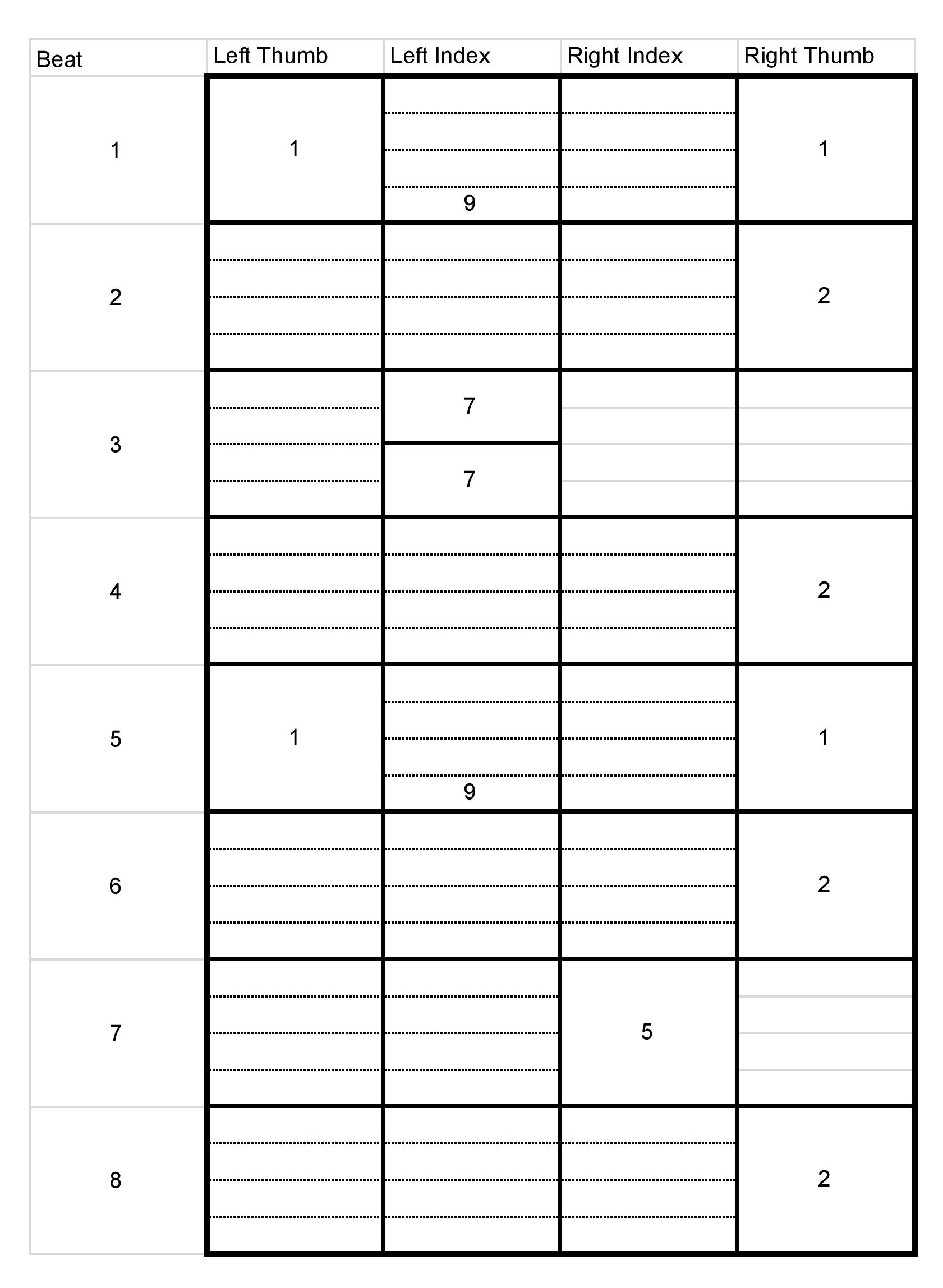
Bani Le - Tab v5

Bani Le - Bridge Notation v5
As the music is cyclical, it doesn’t matter which one of those 8 notes we start on. This means that similarly, when notating the music, we can start anywhere. This can sometimes cause a little bit of confusion for beginners.
For example, the basic 8 note sequence is treated as F-A-G-A-F-A-D-A in the video by Andrea here:
Whereas the video from zkora here:
shows the 8 note sequence as F-A-D-A-F-A-G-A, as we have done on this page.
Both are correct - they’ve simply chosen a different F as the starting point. Andrea’s video lessons on koralessons.com are a great next step. He introduces a version of Bani very similar to the one shown on this page and then introduces many variations and improvisations over the course of a number of videos.
